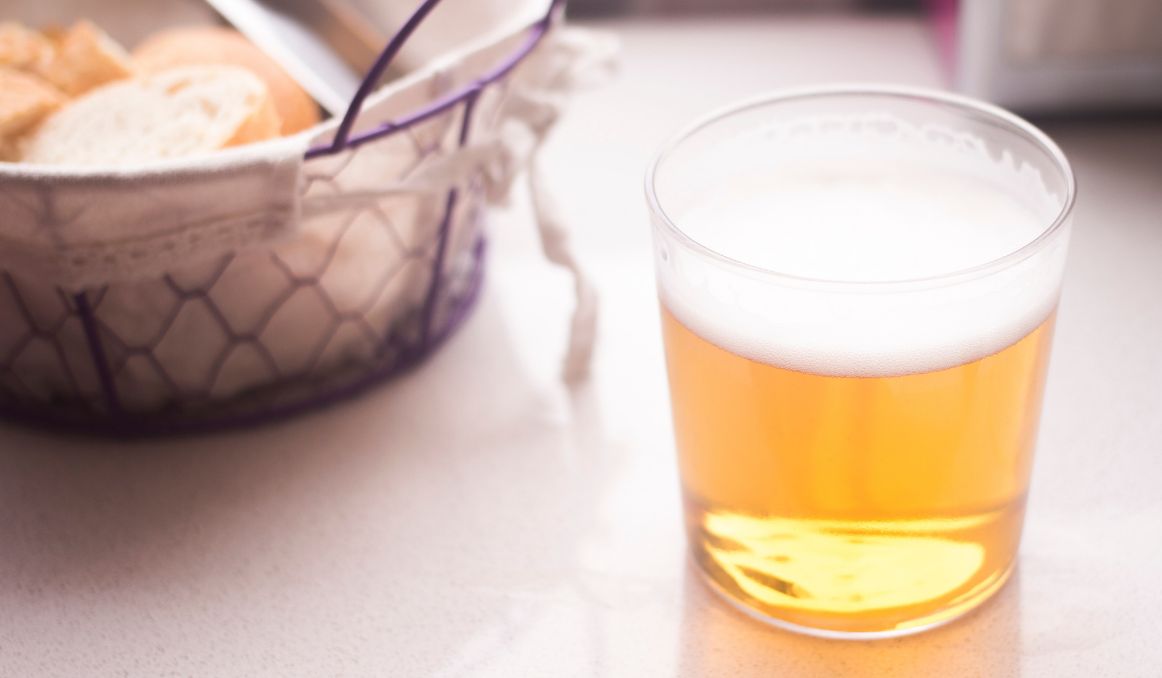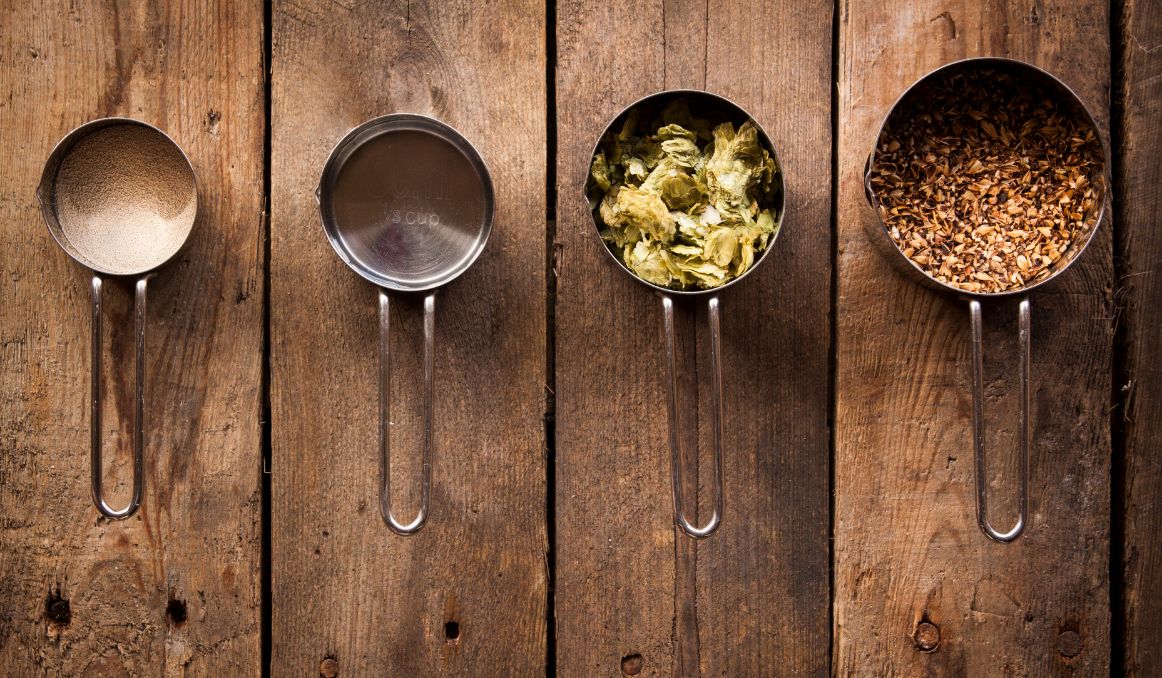Beers that Taste Like Bread: What’s that About?
So you’ve heard of beer bread and now you’re wondering what in the world this new craze is all about.
The truth is, it’s not a new craze.
Beer and bread are actually cousins. Some might even say sisters. They’re much more closely related than many people realize, and they likely have very similar origins.
Bread and Beer: A History

Once upon a time, and by once upon a time I mean like 7,000 years ago, a happy accident occurred.
It was likely a mother was out gathering grain in a container and got distracted; she put her container down, and then a storm struck.
The container with the grain, likely either wheat or barley, maybe both, was rained on to the point of being covered, and then sat like that for days while the storm played itself out.
By the time the woman returned to her grain, it would have been mushy and the container would have been filled with liquid.
Perhaps this mother was gathering the grain to make an unleavened bread or other staple for her family. And in those days you simply did not waste any food.
So, she noted that the mushy grain was still usable for her bread, and she salvaged it.
She also noted that the liquid was rain water with grain remnants. No reason not to use that also.
Yeast
This would have been the first time someone noted the function of yeast in grain.
You see, yeast is a tiny living organism that is literally everywhere all the time. There are hundreds of different strains, but particular strains are attracted to certain foods and beverages, and operate at different temperatures and different environments.
But what all strains of yeast have in common is this: they love sugar.
Remember that starches are also sugars.
In order to reproduce and thrive, yeast needs to feed on sugar. Once it does, it converts all that sugar to alcohol, carbon dioxide, and hundreds of other chemical compounds that make up the nutrients, flavor, and aroma.
This process is what we now know as fermentation.
Fermentation takes place both in bread and in beer, as well as myriad other fermented foods and drinks like kombucha, sauerkraut, yogurt, wine, and more.
Beer and Bread at the Same Time
But that woman 7,000 years ago did not know what was happening.
She only knew that she now had bread dough that was rising thanks to the yeast.
In bread, when yeast converts the sugars in the starch to carbon dioxide, that carbon dioxide is stuck in the dough, which is what makes bread rise. The alcohol that is created is burned off during the baking process.
She also now knew that her highly nutritious water was slightly intoxicating.
It was likely that the “beer” that was produced from that grain sitting in water and the yeast beginning fermentation did not sit so long that the drink became slightly alcoholic.
Fermentation usually takes several days to consume and convert all the sugars to alcohol.
What she had back then was likely a cross between beer and grain water.
Basically, beer bread.
The beer would have tasted yeasty and grainy.
Liquid Bread Beer
Thus, beer bread is not a new craze. It is actually the original form of beer.
Today, you can find beers that taste like bread for a variety of reasons, both intentional and unintentional.
Using Baker’s Yeast for Beer

First, some brewers will make beer with baker’s yeast intentionally to get that yeasty, bready flavor and aroma.
Other brewers will advise against it.
It all comes down to experimentation and what your palate calls for.
All yeast will convert sugar to alcohol and carbon dioxide, so literally any yeast you use will indeed work.
There are in fact some who cannot even decipher the difference between beer made with brewer’s yeast and beer made with baker’s yeast.
It’s certainly worth exploring if you’re interested.
Old Yeast
Another, less palatable reason you might get bread flavor in your beer is if the yeast is old.
If your yeast has passed its expiration date, it is unlikely to be the vital, viable, active yeast you’re hoping will ferment your wort into beer.
Instead, it will just sit there, dead.
And when you drink the “beer,” it will taste yeasty. Because that’s really all you have: yeast. You don’t actually have beer.
In this event, you can simply skim off your yeast and try again with a repitch.
Bread Beer
Finally, you can actually make bread beer.
This one is an actual craze that is taking off.
Breweries around Europe are taking up the call to stop wasting bread and using the bread bakeries throw out (completely fresh still) to make beer.
The same process is followed as usual, except the grain is swapped for bread.
So the bread is toasted and then boiled and steeped in water to extract all the starches and sugars inside. Yeast is then added to convert the sugars. Finally, hops are added to cut the sweetness down.
And now you have bread beer!
So far, bread beer has gotten mixed reviews. Some love it and some hate it.
It mostly gets compared to wheat beers and Belgian ales, and it is certainly something, like most other beers, that can be done well or done poorly.
So, if you are intrigued by the idea of bread beer, check your market shelves and your local craft breweries, and you’ll be likely to find it within at least your first few tries.
And if you’re hoping to make your own bread beer, experiment away!
Play with waste bread, try baker’s yeast, and compare and contrast what you’ve tried and what you’re brewing up.
And don’t forget to have fun.
Cheers!
Passionate about the beer and/or wine making process? So are we! If you’re interested in finding out how you can use our technology to control fermentation and monitor your yeast, save work hours and improve the cost-efficiency of your business, drop us a line at [email protected] or check out our product pages:
- Oculyze BB 2.0 (Better Brewing) Yeast Cell Counter App + Hardware
- Oculyze FW (Fermentation Wine) Yeast Cell Counter App + Hardware
Also, you can now get access to a fully functional demo account to test our Web App. Completely free of charge and with no commitment to purchase.
Sources:


